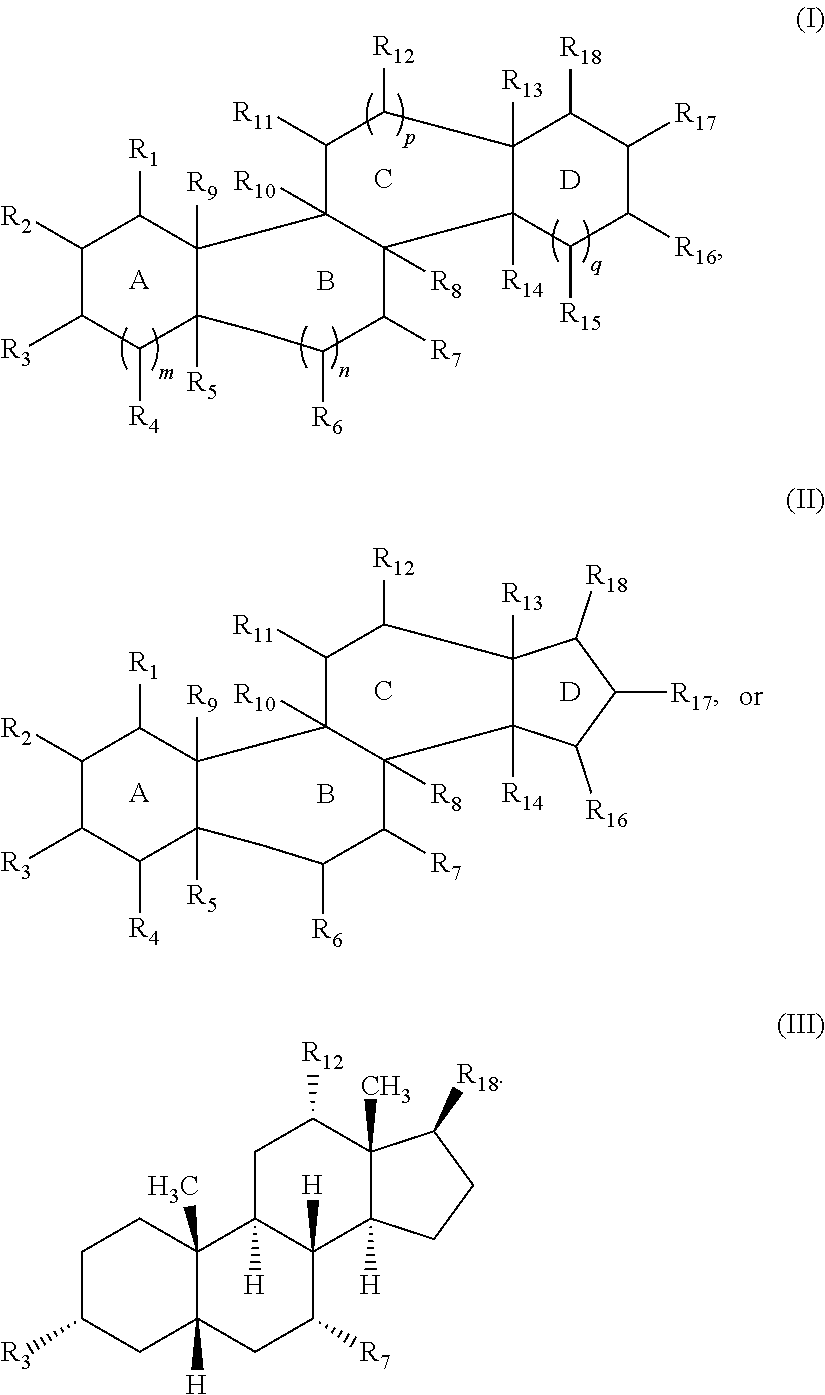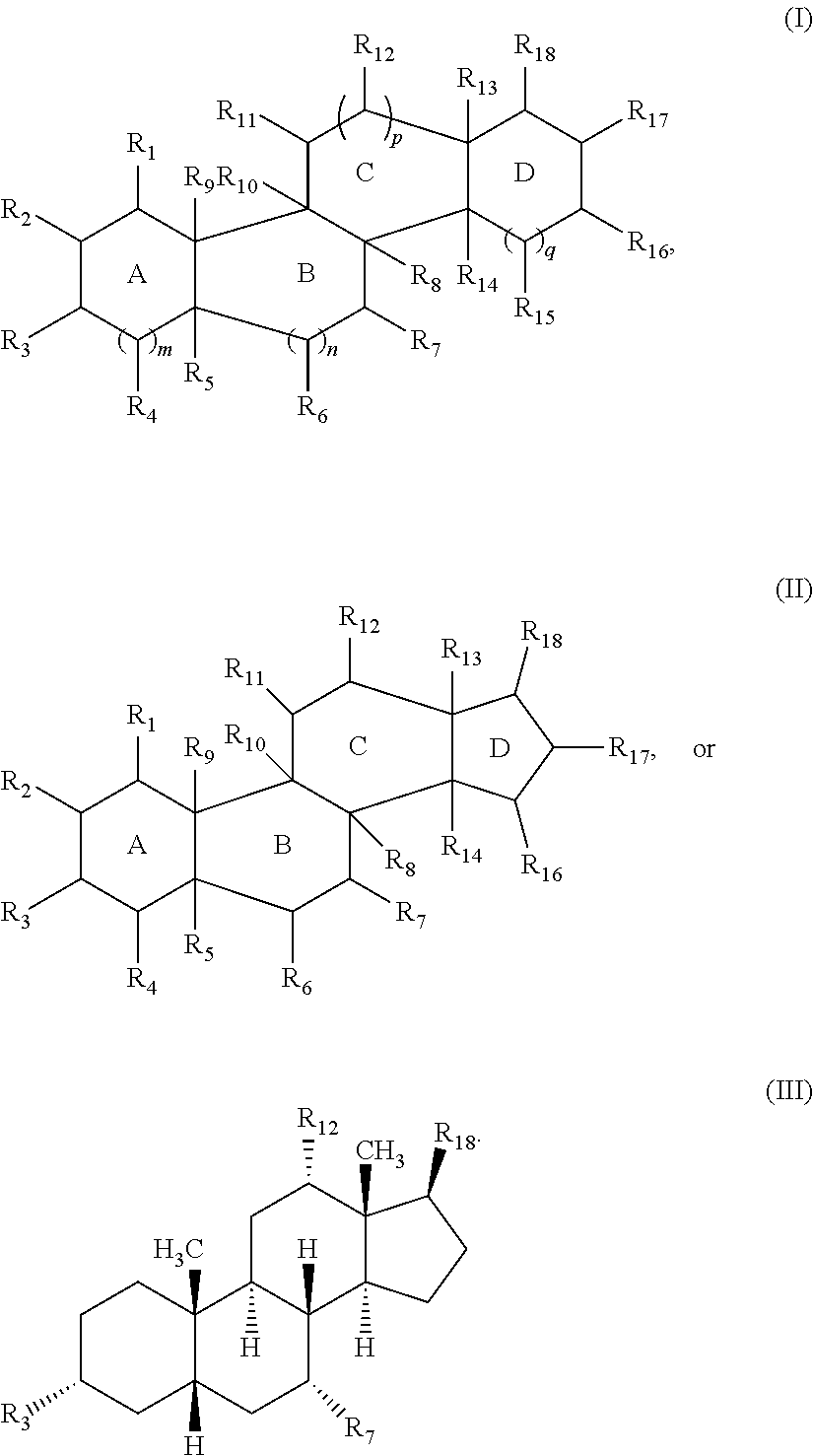Cationic steroidal antimicrobial compounds with endogenous groups
- Summary
- Abstract
- Description
- Claims
- Application Information
AI Technical Summary
Benefits of technology
Problems solved by technology
Method used
Image
Examples
examples
[0177]The antimicrobial activity of CSA-148 was determined in comparison to CSA-44, a CSA compound known to have very high antimicrobial activity compared to other CSAs. The microbes used in the comparative test was were Candida albicans 90028, methicillin resistant Staphylococcus aureus (MRSA) BAA-41, and Pseudomonas aeruginosa (PA01 47085). The measured minimum inhibitory concentrations (MICs) are set forth in Table 1.
TABLE 1CSAPathogenMIC44C. albicans 900288μg / mlMRSA BAA-412μg / mlPA01 470852μg / ml148C. albicans 900284μg / mlMRSA BAA-412μg / mlPA01 470852μg / ml
[0178]The measured MICs for C. albicans 90028 were based on 100% inhibition of growth (i.e. no cloudiness). Judging by 50% inhibition, which is more difficult but is typical for fungal MICs, the MIC for CSA-44 relative to C. albicans can be extrapolated to 4 μg / ml, and the MIC for CSA-148 relative to C. albicans can be extrapolated to 2 μg / ml.
[0179]It was unexpected that CSA compounds within the scope of the invention can perform t...
PUM
 Login to View More
Login to View More Abstract
Description
Claims
Application Information
 Login to View More
Login to View More - Generate Ideas
- Intellectual Property
- Life Sciences
- Materials
- Tech Scout
- Unparalleled Data Quality
- Higher Quality Content
- 60% Fewer Hallucinations
Browse by: Latest US Patents, China's latest patents, Technical Efficacy Thesaurus, Application Domain, Technology Topic, Popular Technical Reports.
© 2025 PatSnap. All rights reserved.Legal|Privacy policy|Modern Slavery Act Transparency Statement|Sitemap|About US| Contact US: help@patsnap.com



